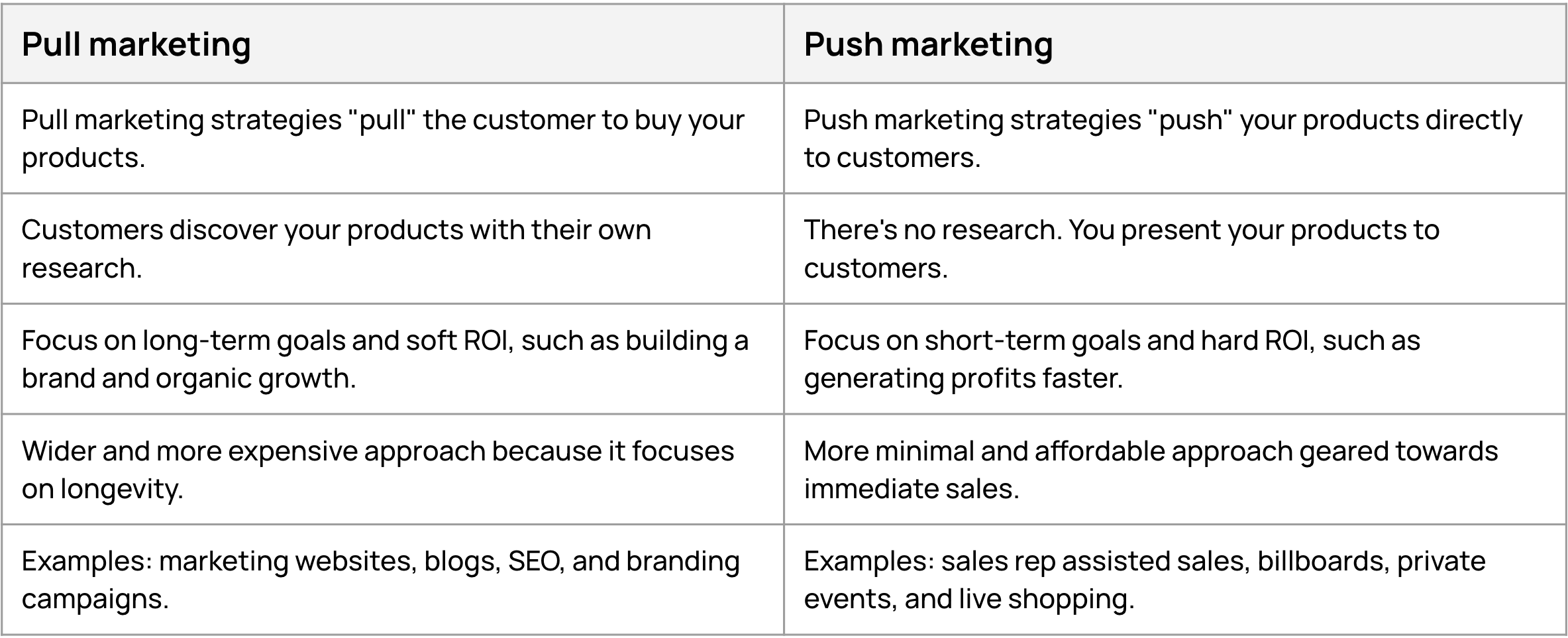There are two broad types of marketing: pull marketing and push marketing. In pull marketing, you attract (pull) potential customers to buy your products or services. In push marketing, you put (push) your products in front of customers. In the table below, you can see some of the key differences between the two types of marketing strategies.

One of the most common examples of pull marketing is ecommerce websites. It's all about putting your catalog online and running marketing campaigns (organic or paid) to reach the right audience. Your products are discovered by visitors browsing or searching your website. Only a small percentage of them will become buyers.
Push marketing does not require you to publish your complete catalog online. By using emails, live chats, or live shopping sessions, you can promote one or more products to a targeted group of contacts, with a higher conversion rate. Push marketing doesn't even require a website. All you need is a simple way—such as a landing page—to show one product or a selection of products customized for your target audience. Think of it as a microstore or a deep link to your ERP's SKUs combined with checkout capabilities.
One of the greatest benefits of push marketing is its sales-driven nature, which can result in more sales faster than pull marketing. However, push marketing is not the best way to build a brand and attract new customers. In fact, your potential buyers must already be in your database.
In general, brands and retailers need both pull and push marketing to grow. New customers are acquired via pull marketing (like websites). Push marketing retains existing customers and converts them into repeat buyers. Considering how fast CAC (Customer Acquisition Cost) is growing in ecommerce, profiting from an existing audiences is getting more and more important, and I can see a world where websites will just be a tool for acquiring new customers, leaving monetization up to push marketing.